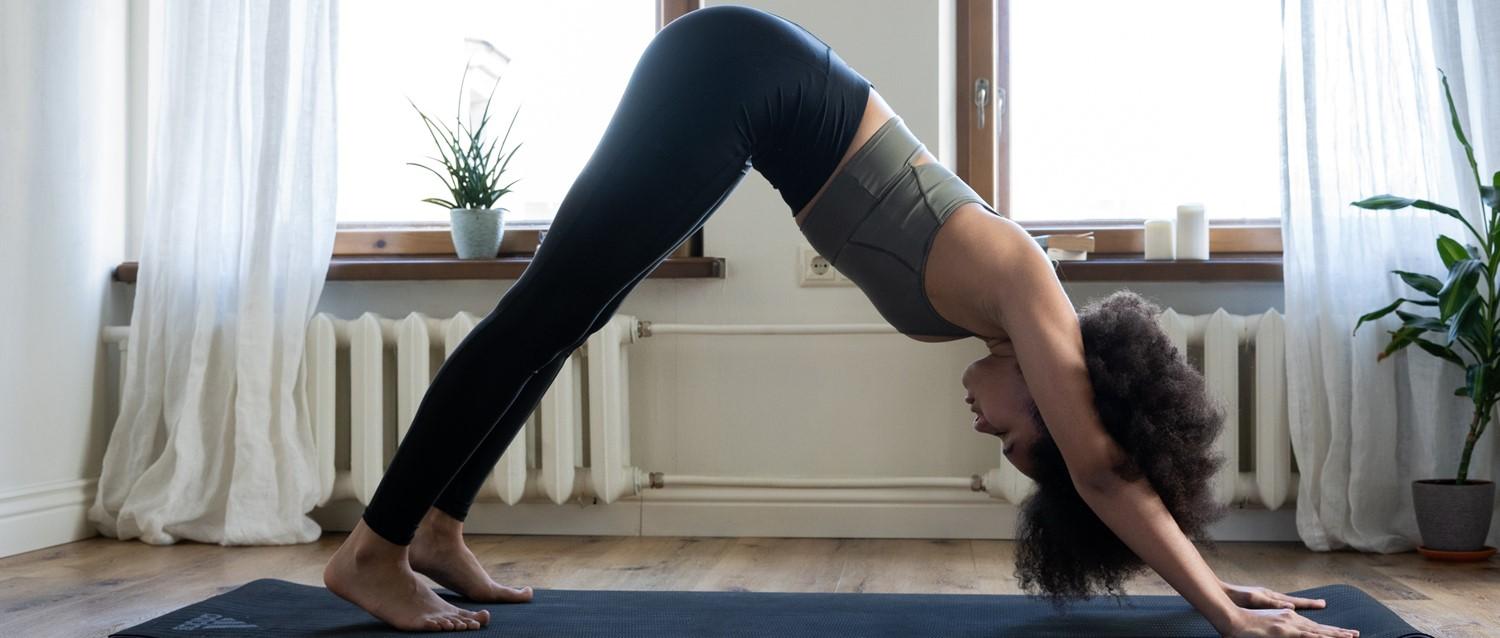
Is yoga good for weight loss?
Peer reviewed by Dr Philippa Vincent, MRCGPLast updated by Lawrence HigginsLast updated 3 Sept 2024
- DownloadDownload
- Share
If your weight is affecting your health, yoga can be a useful tool for weight loss. The changes yoga brings about are not only physical, but also psychological and behavioural.
In this article:
Continue reading below
Is yoga good for weight loss?
The mental health and mindfulness benefits of yoga are well known. However, it may also help you lose weight and there are many other benefits.
Danielle Wills, yoga and meditation instructor says: "Yoga not only has mental benefits, such as relieving stress and improving your mood, but also physical benefits too. It can help improve your posture and balance, lengthening the spine and becoming more flexible. It can help with back pain and symptoms of arthritis, and also contributes to healthy sleep."
Yoga and calorie burning
Yoga isn't generally considered an aerobic exercise. This means that it doesn't tend to get your body moving enough to significantly increase your breathing, heart rate, and blood flow - all of which can help you to burn calories quickly.
There are types of yoga that are more physically intensive than others. For example, power yoga and vinyasa keep you moving constantly, and are usually practised in hot yoga studios, which further increases your heart rate and helps burn more calories.
But when it comes to yoga for weight loss, there's more to it than the calories you use up in the moment, as Wills explains: "Yoga can help to regulate your nervous system, which allows your digestive system to process your food, increases the calories you burn while at rest, and helps your energy levels to stay at their best."
These factors may help explain why some people who regularly practise yoga find their weight a little easier to manage.
Continue reading below
Yoga and mindfulness
Practising the art of mindfulness through yoga can also be a helpful tool for weight management.
"Mindfulness, at its essence, is really about being a friend to yourself," explains Wills. "It allows you to hear yourself and recognise what you need in any given moment. Often, we're not used to listening to our true needs and when we ignore these signs, our nervous systems go out of sync. We find ourselves doing things that aren't helpful in the long run - like skipping workouts and eating without intention."
Yoga and sleep
Yoga, as an effective tool for reducing stress, may also help improve the quality of your sleep. Regularly getting a good night's sleep has been linked with better weight management and the prevention of unhealthy weight gain.
Patient picks for Exercise and physical activity
Continue reading below
Which type of yoga is good for weight loss?
If you're managing your weight, opt for more intensive, higher calorie-burning forms of yoga - including power yoga, vinyasa, and any form of hot yoga. Wills also recommends the following:
"One of my favourite ways in which yoga can help facilitate weight loss is when it's used as a preparation for strength sessions. For example, practising your yoga squat can help you build up the flexibility to start training full depth squats in the gym, and movements like 'chaturanga' - which involves strength poses like the plank. This can be great to build strength and muscle tone in your arms, especially if you add tempo or repetition to the mix."
Plank pose for weight loss

How often should I do yoga for weight loss?
Focusing on one type of yoga isn't always the best strategy if you are concerned with long-term weight management. Remember, it's more important to make yoga and other more strenuous physical activities a regular habit than to commit to a limited selection of yoga poses. A bit of variety is usually more fun, after all.
Try to practise yoga as often as your weekly routine allows. Aim for three to five sessions of one hour practice a week, or if you're a beginner, ease yourself in with 20-minute sessions and gradually build up from there. If you wish to see results, always allow time in your week for more intense physical activities that get your heart pumping.
Whatever your capability level, it's also important to balance more intensive yoga forms with days of more relaxing, restorative yoga poses or total rest days. This allows your body time to recover and protects against injury.
Article history
The information on this page is peer reviewed by qualified clinicians.
Next review due: 3 Sept 2027
3 Sept 2024 | Latest version
18 Nov 2022 | Originally published
Authored by:
Amberley Davis

Ask, share, connect.
Browse discussions, ask questions, and share experiences across hundreds of health topics.

Feeling unwell?
Assess your symptoms online for free
